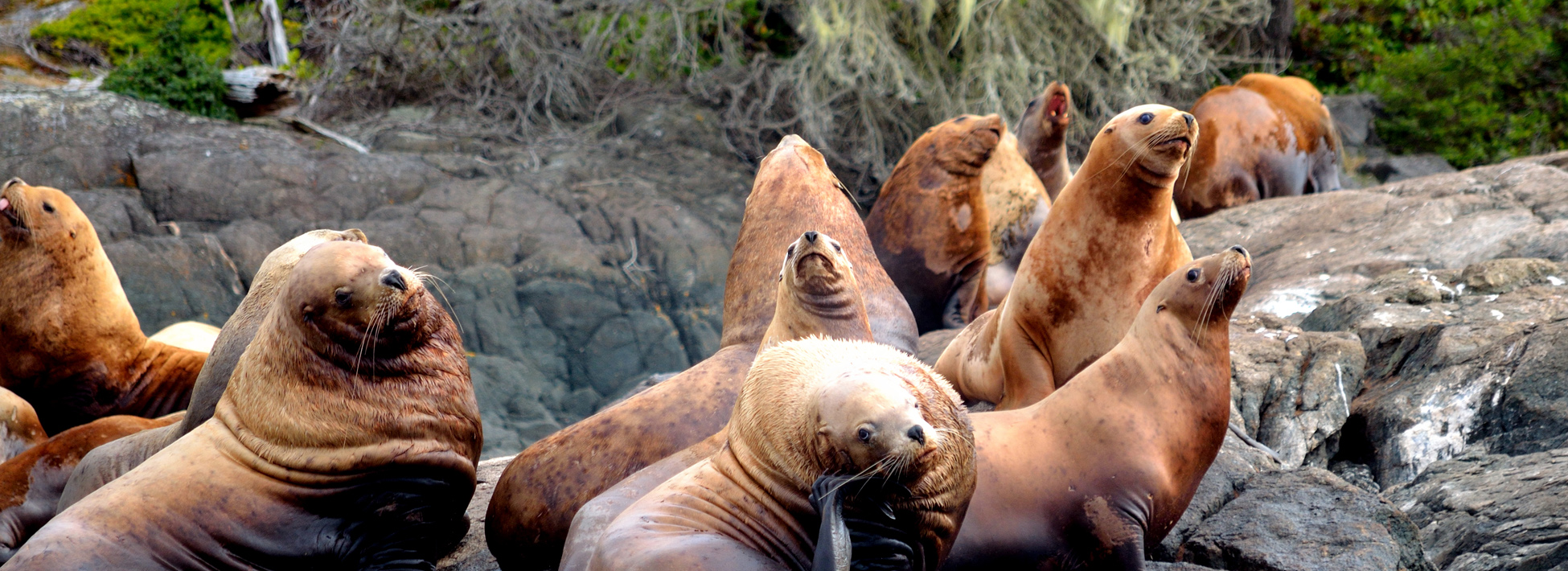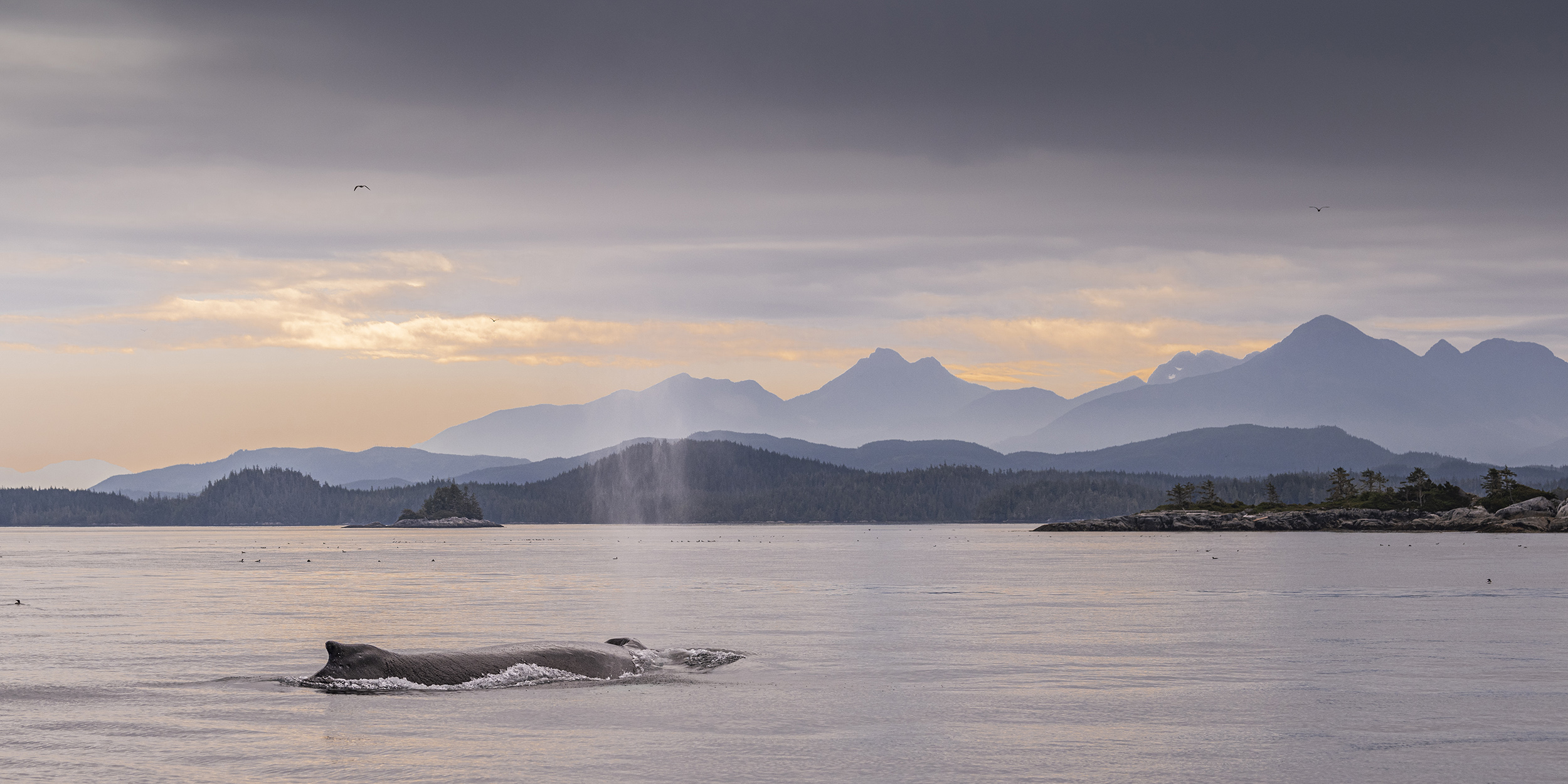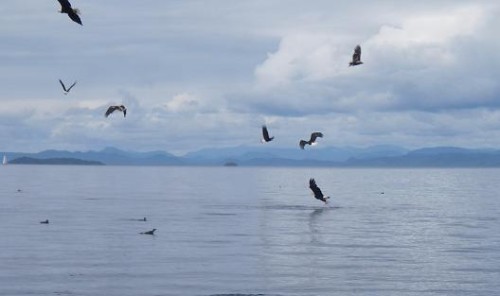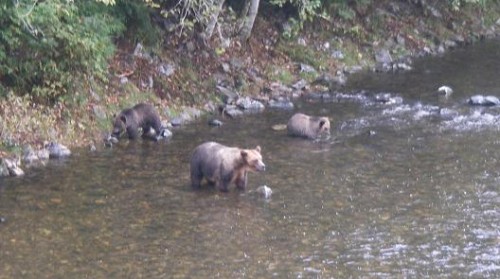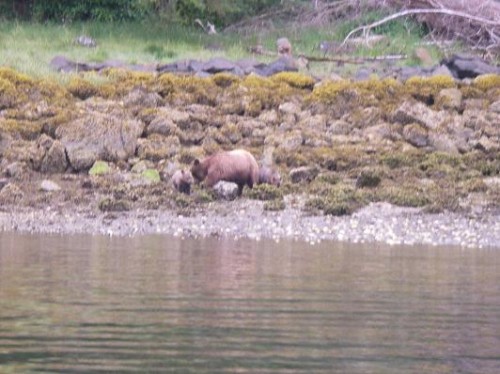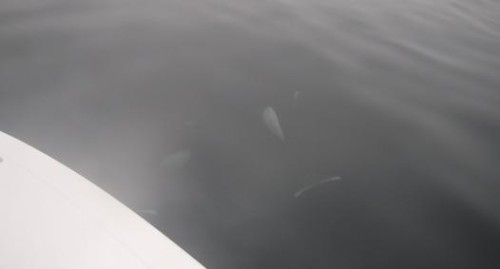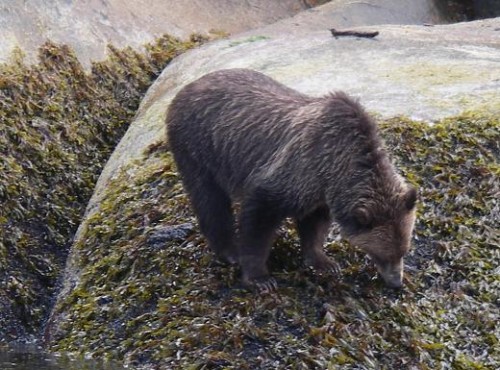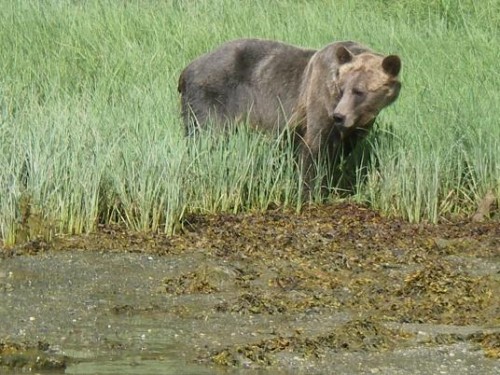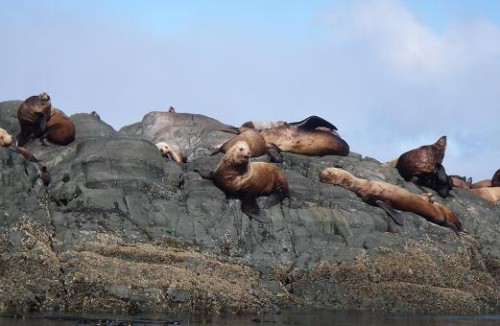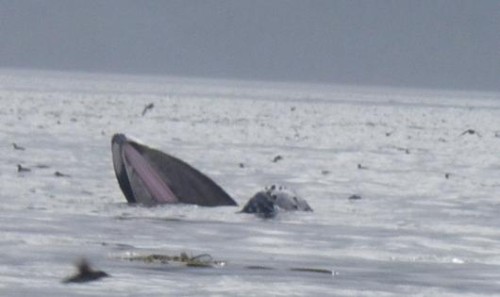
This photo is much harder to get than one of a grizzly bear. Although the sun does rise every morning it is often behind the layer of cloud that hangs over BC’s Knight Inlet. By mid-morning the clouds have burned off but it is past sunrise time. Actually while on the whale watching tours it is nice to have a little cloud cover as it is better for photos than the bright sun reflecting off the water.
